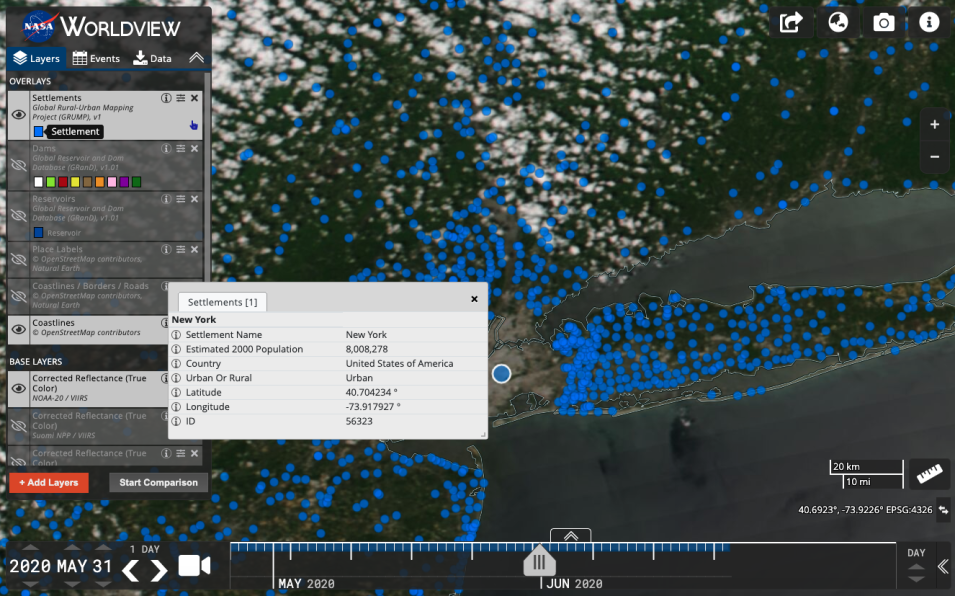Worldview Release 3.7.0 includes lots of new goodies!
- Layer Picker: Layer descriptions are more easily discovered, we've added more search functionality with options to filter the layers by different facets such as by temporal period, category, measurements, whether the imagery was obtained during the daytime or nighttime, and many more.
- Timeline Availability Panel: Visually determine whether layers you have loaded have temporally coincident imagery using the timeline availability panel.
- Distraction free mode: Too much stuff on top of the map? Click on the "i" button to turn on distraction free mode and get rid the Layer List, Timeline, Measurement Tool and other buttons so you can concentrate solely on the imagery!
- Vector capabilities: We've adding the ability to interact with vector layers such as Settlements, Dams, Reservoirs and Nuclear Power Plants. You can now zoom in and query a point or polygon for these layers to find out more about them. The settlements layer provides settlement name, estimated population in 2000, and whether the settlement is urban or rural. More to come in forthcoming releases...fire/thermal anomalies layers next!
For more information, read this short article on the Earthdata website: New Imagery and Functionality Available in NASA Worldview.


